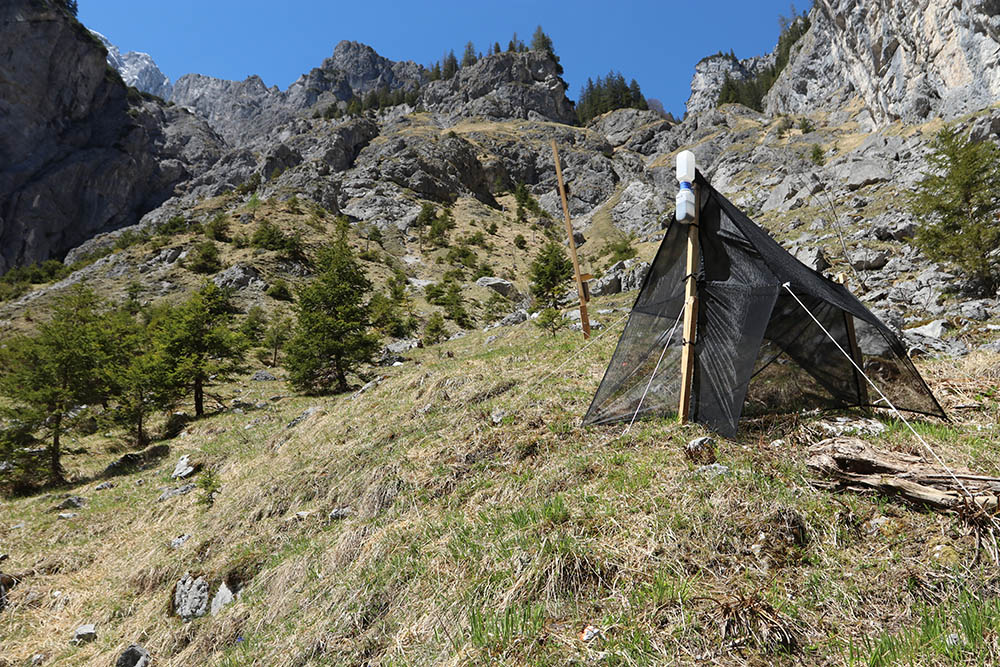Biodiversity monitoring
Caused by the interaction of various factors, such as climate change, land use, substance inputs or invasive species, the species diversity and composition of biotic communities is in a constant state of change. As national parks are one of the central elements of nature conservation, it is important to permanently collect information on the status and development of biodiversity in national parks.

Malaise Trap Wimbach Valley
The two Bavarian national parks, Berchtesgaden and Bayerischer Wald, have been conducting joint biodiversity monitoring in both national parks since 2021. In Berchtesgaden National Park, 54 permanent monitoring plots were selected for this purpose, representing the main habitats of forest, natural open land and alpine pasture. In order to take into account the different forest development phases, old forest stands and young, structurally rich stands were selected following natural disturbances such as bark beetle outbreaks.

Forest area
The natural open land includes the rock-dominated habitats of the high altitudes, in the Wimbachgries or at the Eisbach, as well as alpine grasslands and mountain pine scrub. In addition, the plots were selected to cover an elevation gradient from 600 to 2300 m above sea level. A broad set of methods is used on each plot to survey the diversity of species as comprehensively as possible. For example, plants are mapped and fungi are determined using DNA sequencing from soil and deadwood samples. Insects and spiders are caught using malaise, window, and ground traps, and birds and bats are recorded using audio recorders. Phototraps are used for mammal surveys.